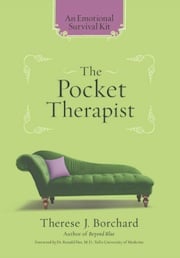 I have mentioned Dr. Elisha Goldstein in a few of my blogs. Psych Central added his blog, “Mindfulness and Psychotherapy” just as I was looking more into mindfulness and relaxation techniques myself in order to try to de-stress. Dr. Goldstein brings much experience and wisdom on the topic to readers who are willing to try train the mind to stay centered on the moment. He is a clinical psychologist and conducts private practice in West Los Angeles. And he and his wife just gave birth to their first child a few days ago!
I have mentioned Dr. Elisha Goldstein in a few of my blogs. Psych Central added his blog, “Mindfulness and Psychotherapy” just as I was looking more into mindfulness and relaxation techniques myself in order to try to de-stress. Dr. Goldstein brings much experience and wisdom on the topic to readers who are willing to try train the mind to stay centered on the moment. He is a clinical psychologist and conducts private practice in West Los Angeles. And he and his wife just gave birth to their first child a few days ago!
1. Dr. Goldstein, you explain in several places on your blog that we attempt to use mindfulness to calm the distressed mind by breathing in and acknowledging the stress and while breathing out, saying something like “It’s okay.” Sometimes the mind shifts to a different thought or feeling, but you try not to judge it, and you come back to your focus. I am a beginner at mindfulness, and I do appreciate its benefit–when I manage a few minutes of existing in the present moment I feel wonderful–but early on in my recovery from depression, and still today during times when my mind is an untamed horse, my therapist has told me it’s better to simply distract myself … to do whatever activity I can to get my mind off of my mind. How would you make that call? At times is distraction more beneficial than mindfulness?
Dr. Goldstein: Great to be a part of your blog Therese, thanks for inviting me. I think your therapist is right on. Mindfulness meditation has been shown to be supportive to many people who suffer from depression as it provides a really practical way to come to present moment and practice non-judgment. We’re always going to judge, it’s just natural for our minds to do that. The practice is to notice when the judging is happening so we can recognize the space in between what we’re judging (the stimulus) and our judging (reaction) and choose to make a change.
However, with that said, when you’re deep in a depressive episode that is very difficult or near impossible to do. The ability to focus and concentrate are just thrown out the window. Now, many highly experienced practioners who suffer from depression may argue that mindfulness supports them during their episodes, but this would take great skill that would come from lots of practice. For those who are less practiced or find it just too painful to be present when in a depressive episode, I think distraction is a good way to go, just be intentional about it. The truth is, if you’re being intentional with the distraction, in a way, you are present. So the distinction here is between being deep in an episode versus working with mindfulness to help prevent relapse. Research that led to the creation of Mindfulness-Based Cognitive Therapy (MBCT) groups have supported this conclusion.
2. Related to the first question, someone once told me during meditation to treat thoughts like birds landing on your head. What you want to avoid is for them to stay and build a nest. I was telling my therapist how it seemed like the bird kept making the nest, so she said, “Then offer your imperfect meditation to God.” And that really helped. I even did a video on it. Would you say to the meditation novice that aiming for the imperfect meditation is okay?
Dr. Goldstein: I love that metaphor. One of the most common questions that come up when beginning a mindfulness practice is “am I doing this right?” We can all let go of the notion that there is a perfect meditation. The one thing we can be sure of is that the birds will come back and begin to build a nest. The difference is in our awareness that the nest is being built. We help the nest building through our automatic reactivity. One twig is laid when a friend doesn’t smile at us and we think “did I do something wrong?” Then our mind starts going back into all the relationships that we fumbled in the past as more and more birds come laying their twigs. Our bodies start to feel heavy, we start feeling shame, and then we decide, I just don’t feel like being with people and then isolate. The nest is getting pretty sturdy at this point.
Offering your “imperfect meditation to God” is a way of not judging yourself for it and that is the cornerstone of a mindfulness practice. I am all for using the symbolism that is meaningful to each person.
Just sitting, standing, or lying down and being present with yourself is a gift to yourself and an act of self care, there is no perfection!
3. I like how you coach readers on crying in your post “Surviving Depression: A Mindful Way.” I recently wrote a post on the healing property of tears. But I still battle with that voice within that says crying is giving in. And I know my male readers, especially, struggle with crying. How do you learn to cry?
Dr. Goldstein: Our culture has a lot of judgment about crying and many of us learn from a very young age, especially men, not to cry and just to “stuff it.” It’s unfortunate and I think this is changing little by little. Depending on a person’s situation, I support going to a therapist who can act as a guide to discussing some of the wounding that may have occurred earlier in life. There will be a lot of fear covering up the tears as they may seem foreign and be riddled with judgment from earlier years.
That voice that says “crying is giving in” is really trying to be helpful. It’s trying to save you from experiencing something that may be really painful. What usually happens is we either believe that voice or we judge it from keeping us back from experiencing feelings. A third way to go about this is to really recognize that it is a part of us that is trying to help and to thank it for trying to keep us safe. Then let it know that you can handle it and are going to try and feel this feeling for a while. The non-judgment piece here is important because it allows you to send more loving energy inside rather than damning energy.
One way to get in touch with tears is to slowly begin to notice where sadness resides in the body. Many people feel it in their chest (near their heart) and others may feel it in their face or stomach. On my CD Mindful Solutions for Stress, Anxiety, and Depression, I have a meditation on their that guides us through becoming more aware of emotions and learning how to approach them instead of avoid them. It’s important to see if you can bring attention to the feelings as they are. When judgments or the voices arrive, you can bring your attention to them, acknowledge their presence, have that dialogue if necessary, let them be, and then gently bring attention back to just feeling whatever sensations are there. This dance back and forth may be done many times. Notice that patience is an important attitude to cultivate here. If and when the tears begin, bring attention to the process of crying and notice any resistance. Try to “be with” whatever feelings are arising, letting them be. Practicing being mindful with our emotions can be very challenging because we have so many automatic defenses (e.g., “Crying is giving in”).
It can be helpful to have guidance via a skilled therapist.
4. In your post, “Mindfulness, Mood, and Your Mental Health,” I really like what you say about thoughts and reality: that “even though we believe our thoughts to represent reality, the truth is, our thoughts are not facts.” This reminds me of don Miguel Ruiz’s second and third agreement (in his classic “The Four Agreements”): Don’t Take Anything Personally, and Don’t Make Assumptions. Your way out of making assumptions, and taking things personally is to stay in the moment. Can you say more on that?
Dr. Goldstein: Mood has a tremendous influence on how we perceive things. There is the classic example of a friend walking down the street, only to walk right by you without saying hello. When you are depressed the thought is “What did I do?”, when you are feeling well the thought is “what’s wrong with him today?” The fact that we can think two different things about the exact same event leads us to the conclusion that our thoughts are not facts. When we learn to be present to the stories that we weave day in and day out we can stop them in their tracks earlier before they lead us down a path where the”nest is fully built and the birds are mating.”
Different people are going to appreciate different ways of being present. One may really like using the breath as an anchor while another will like to feel the sensations of the feet on the floor. Many who suffer from anxiety, appreciate walking practice or yoga more as the movement is helpful. We can bring nonjudgmental present moment awareness to any of these activities.
5. In that same post, you write: “If you are feeling an uncomfortable emotion or pain, have compassion for yourself and do something pleasurable or kind for you that day.” Sounds like good advice. Did you have a few examples in mind?
Dr. Goldstein: It’s good to have a list of pleasurable things to do sometimes because when we’re not feeling well it’s sometimes hard to think or even choose something. You might listen to music, soak in a bathtub, walk, people watch, meet new people, treat yourself to a favorite food, exercise, dress up, call a friend, go to a movie, and the list can go on. In fact, I found a list somewhere (lost the reference), but I have it on my website which you can get to by clicking here.
More important than anything is just to remember that this is a very forgiving practice and if your forget to engage in mindfulness for a day, a week, or a month, just forgive yourself for that time and know that you are now present and can engage today!
May you be happy, may you be healthy, may you be free from fear, and may you deeply know the love that lives inside of you.
To read more of Elisha Goldstein, please check out his blog on Psych Central by clicking here.
* Click here to subscribe to Beyond Blue and click here to follow Therese on Twitter and click here to join Group Beyond Blue, a depression support group. Now stop clicking.

